Summer hiking season is well underway and has been full of all kinds of conditions. As the season continues, we wanted to share some tips about hiking and recreating outside in the summer, particularly in the heat and unpredictable weather!
Before You Go
- When you’re preparing for your hike, make sure you have the ten essentials. While this may be modified for shorter hikes, it’s still good to go through the checklist and make sure you’re not forgetting something important.
- With the warmer summer temperatures and humidity, try to plan your hikes for the cooler times of day. We recommend hiking in the early morning or early evening when possible and trying to avoid the middle of the day when daily temperatures are at their hottest.
- Always plan out your hiking route ahead of time and know your entrance and exit points. You should always hike with a paper map and compass and know how to use them; technology is not foolproof. While many apps are great for finding local hikes and reading reviews and recent trail conditions, sometimes the data and trail routes have inaccuracies or are inaccessible in areas of low or no service. Maps of many popular hiking areas are available at our Visitor Center and online store. Take photos of trail maps at trail heads or download trail maps from park websites before you go. Additionally, make sure to know where trails overlap or where other services on the trails might be located. Several of the peaks on the Long Trail pass through ski areas; while it may be tempting to take the gondola down to the parking lot, where it ends may not be where your car is. This will either make for a long walk back to your car or an expensive shuttle ride. For a digital good hiking source, TrailFinder is a detailedand accurate source for Vermont and New Hampshire trails.
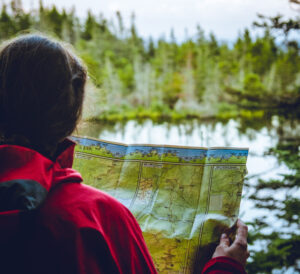
- Consider a hike toa watering hole or pond for an opportunity to cool off mid-hike. Check out our list of Best Hikes to Swim Spots in Vermont. If there are no good swimming areas on your hike, bring along a bandana or buff to dip in a cool stream and use that to help cool down. Keep in mind that at many locations you swim at your own risk. Local rivers, ponds, and watering holes are not consistently monitored or lifeguarded. If there has been significant rain recently, watering holes may be dangerous with higher waters, faster currents, and possible debris and contamination from runoff or flooding. Proceed with caution if water levels are high, as currents may be stronger and hazards beneath the water’s surface may not be easily visible. Follow all recommendations or restrictions from local agencies on swimming and water safety.
Hydration and Nutrition
-
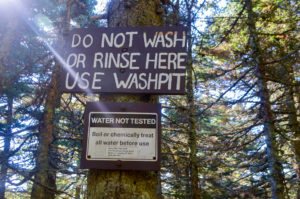
“Water not tested” caution. Photo courtesy: GMC archives Carry more water than you think you will need or bring some sort of water filter or treatment method to refill at a water source on trail. Backcountry water sources are untreated and consuming unfiltered water can cause giardia, stomach pain, vomiting, and diarrhea. Please note, not all trails have access to water sources and if there has not been much recent rain, sources may not be flowing or existent so plan accordingly. It’s generally recommended to drink half a liter of water for every hour you hike. If the weather is going to be very hot, make sure to drink water the previous night and before heading out on your hike. If hiking with your pet, make sure they’ve got plenty of water too.
- Bring extra snacks! Hiking in hotter weather can cause you to exert more energy and sweat more, so you will definitely want to have some salty snacks and electrolytes on the trail with you, especially on longer hikes/backpacking trips. This will help replenish salt in your system, give you more energy, and help you drink more water.
What to Wear
- Dress for the weather; lightweight polyester/moisture wicking clothing is best for the hot weather. It will wick away perspiration, keep you cooler, and dry faster than cotton fabrics.
- Bring an extra pair of shoes. After a long hike, it’s so nice to take off the hiking shoes and change into something else, particularly if the trails are wet.
- Speaking of shoes, always hike in appropriate footwear. Hiking boots, trail runners, sneakers, and running shoes are all good options depending on the trails you’re on. You’ll want something sturdy on your feet, particularly if your trail includes possible rock scrambles, ladders, or creek crossings.
- Bring along a buff or bandana. They’re great for use as sweatbands and can be dipped in streams to help cool you off.
- Sun protection – while many trails are in the beautiful forests of Vermont, you’ll find yourself hiking in the sun at times. We recommend wearing sunblock and having sunglasses, hat, and sunshirts on hand, especially in areas more exposed to the sun’s rays such as above tree line in the alpine zone.
Dealing with Weather
- Always double check the weather forecast before you head out, and check the forecast at your hiking trail’s start and end points. Weather forecasts from the National Weather Service are typically reliable and they also publish specific mountain point forecasts for popular prominent peaks. Vermont State Parks has also started posting QR codes to forecasts at some trailheads. In the summer especially, afternoon showers can often pop up out of nowhere, particularly in the mountains. Be prepared to either hike in the rain, adjust your route, wait out the storm in a shelter, or even cancel plans if the weather is looking wet. Cell service can typically be reached on a summit or in an open clearing to check the weather during your hike, although this is not guaranteed. If above tree line in the alpine zone and on exposed ridgelines or summits, such as on Mt Mansfield, look for bad weather bypass routes to take you on a more sheltered route.
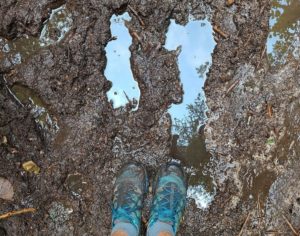
- July saw a lot of rain, making the trails muddy and potentially dangerous. If you’re looking to hike after major rainstorms, research your trail and know your route and exit plans, as trails may become impassable. There may be hazards such as loose rocks, trail or road washout, dangerous creek and water crossings, and mud slides. Check our Trail Updates page for up-to-date information.
- This summer has seen higher levels of air quality concerns with the Canadian wildfires. With increased impacts from climate change, we are likely to continue to see air quality become a more common concern in summer and fall months. On days when air quality is considered very bad/in the red, consider saving your hike for another day when the air quality is better, especially if hiking with young children. If you have pre-existing heart or lung conditions, consult with a doctor and use caution. To check air quality status, head to www.airnow.gov.
Staying Safe in the Heat
- Know the signs of heat-related illnesses and how to treat them on trail. The Green Mountain Club offers Wilderness First Aid certification courses which cover the topic along with other trail first aid skills, but here’s a good place to get a quick refresher before your next summer hike: Warning Signs and Symptoms of Heat Related Illness
Feeling ready to hit the trails? Call or email the visitor center for hike suggestions, or check out the long list of Summer Hikes on our website. Do you have a suggestion for us to add to our summer hikes list? Let us know!
Happy hiking!


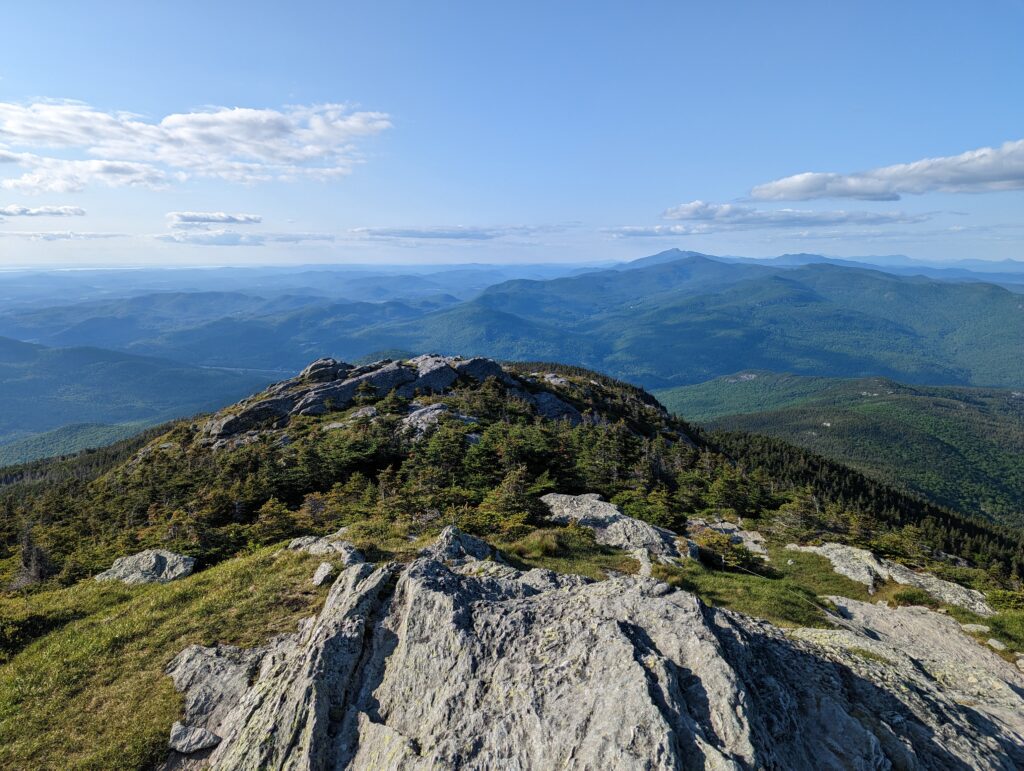
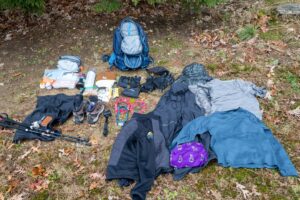
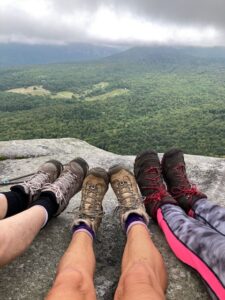

















Leave a Reply